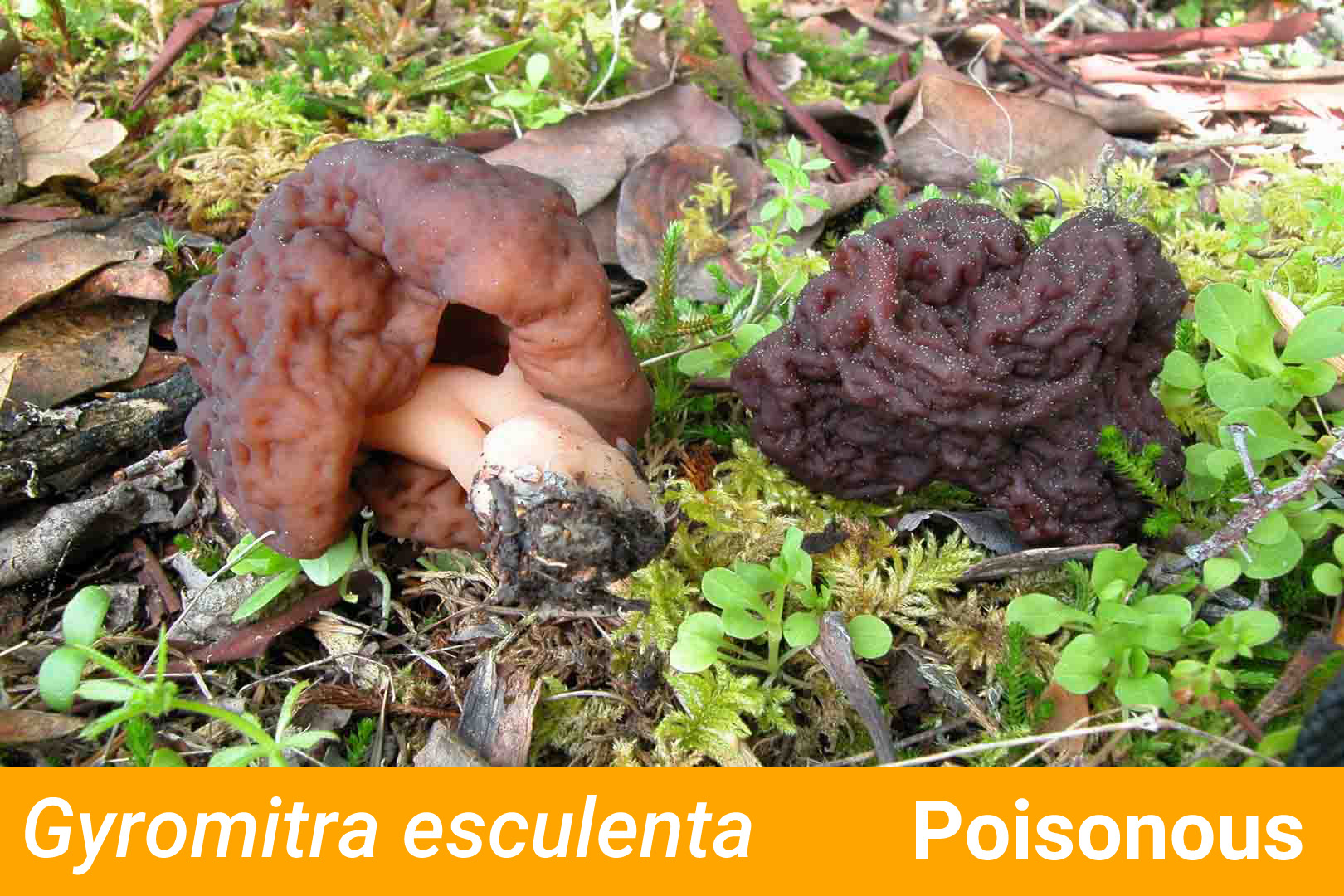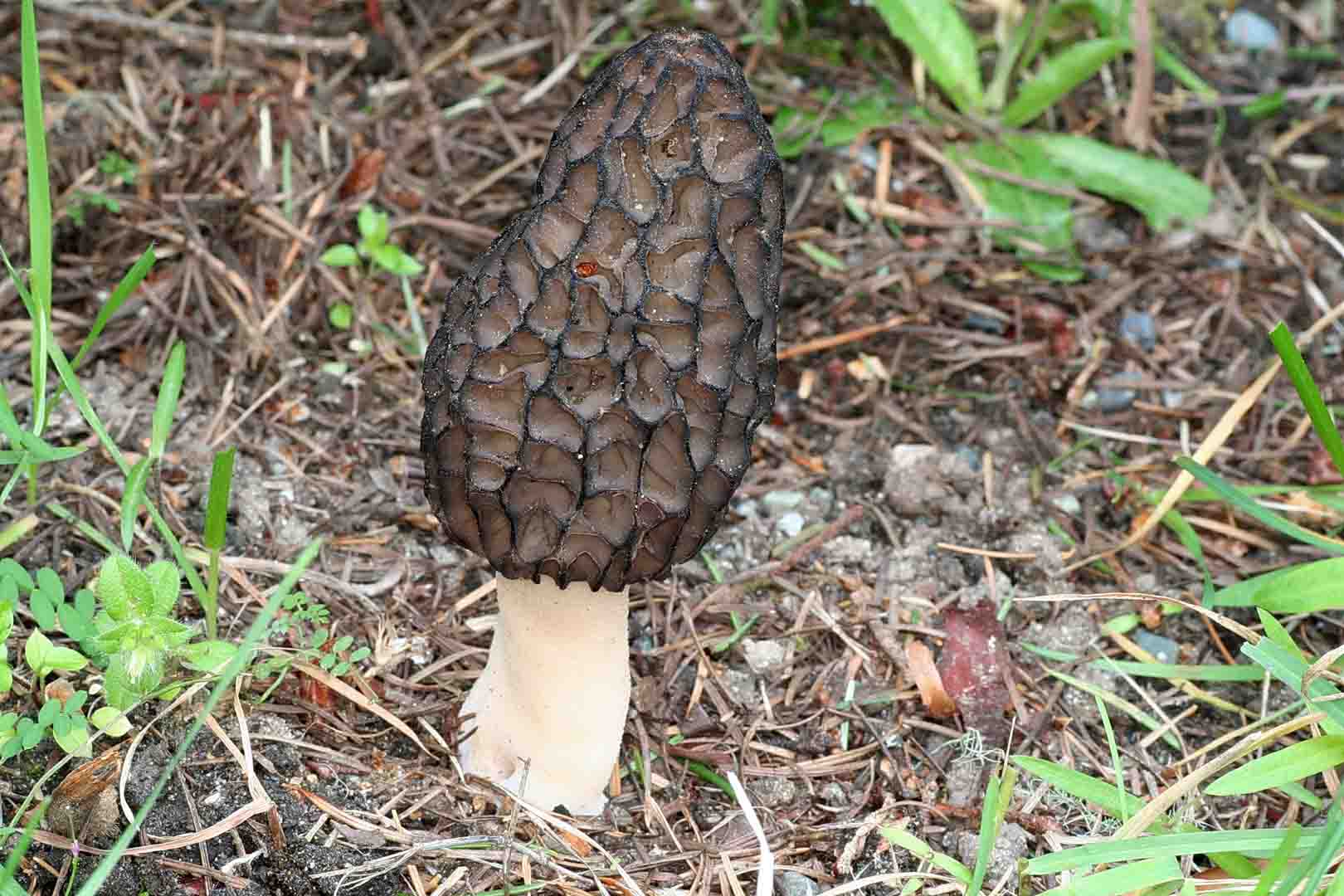Morchella sp. — Morels
In true morels, the outermost surface of the head has narrow, flattened ridges that form rims around deep pits. Cut a morel in half; a hollow space runs from the inside of the cap to the base of stem. Do not confuse poisonous False Morels (indicated in the small images above), with brain-like rounded lobes or a saddle-shaped head, with edible true morels.
Odour: Mild, taste (always cook thoroughly and enjoy in moderation!) meaty, nutty, delicious.
Head: ~3.5-8 cm tall (varying by species) roughly conical, with deep pits rimmed by ridges, beige, tan, brown, or almost black. Cut the fungus lengthwise to verify that it is hollow from just under the tip of the head down most of the length of the stem. In most species ridges and pits up connect to the stem so that the whole cap is 'glued' to the stem along its entire length. In Morchella populiphila, a species associated with poplar trees along rivers, the bottom of the head hangs free as a skirt but at least the top cm or so of the cap is 'glued' to the stem.
Stems: 3-7 cm long x 2.5-4 cm wide (varies by species, occasionally longer or wider). Usually lighter than the head, whitish to tan.
Spores: 25-37 x 15-23 µm, contents homogenous without prominent oil droplets.
Habitat: On ground in forests. Black morels occasionally pop up in wood mulch and species of black morels can be abundant in spring following a forest fire.
Toxins: Unclear, gastrointestinal symptoms may be due to hemolysins, which damage red blood cells but presumably usually evaporate or are destroyed by cooking6.
Symptoms: Most common symptoms are gastrointestinal (67%)6. From ~15 min to 13 h after eating morels, symptoms include nausea, vomiting , cramps, and diarrhea. Neurological symptoms arise 2 h to 1 day after eating and include vision disorders, dizziness, drowsiness, hand tremors disorientation, numbness and sensitivity to sound, chills. Most people recovered within a day, although in one individual, tremors lasted for a month 6.
Treatment: It is important to distinguish whether morels (Morchella sp.) or false morels (Gyromitra sp.) caused poisoning sympotms. Initial gastrointestinal symptoms may be similar, but poisoning by false morels justifies hospital admission as it can lead to kidney and liver damage, seizures, coma and death. Poisoning by morels usually resolves itself with supportive treatment or time.
Cases of poisoning from morels: In an infamous retirement banquet for Vancouver's chief of police, one of the city's best hotels served a pasta salad containing raw morels that poisoned 77 of the 483 attendees8. Victims reported nausea, diarrhea, vomiting, and cramps. Some reported a hive-like rash, not a usual symptom of poisoning by morels but possibly attributable to another raw mushroom, the shiitake Lentinus edodes, also in the salad.


